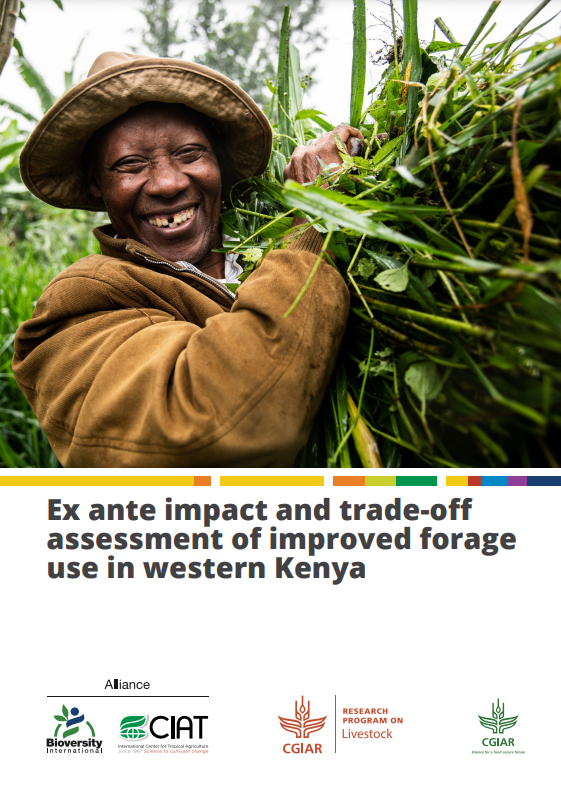The dominant cut-and-carry forage grass in East Africa, Napier (Pennisetum purpureum), is suffering from increasing problems of stunt and head-smut diseases leading to important decreases in yield. Alternative improved forages have been developed and promoted by research and development organizations globally over the past couple of decades to diversify feed baskets and increase the quantity and quality of available feed.
However, the use of these improved forages is associated with different yield potentials, land requirements, effects on livestock productivity, and related impacts on income and food security, which are influenced by agroecology, season, and management. Farmers’ preferences depend on their specific production objectives and challenges, and the weighing of these multi-dimensional benefits and trade-offs. The objective of this research was therefore to explore selected impacts and trade-offs as well as the role alternative forage grasses can play in the mixed crop-livestock systems of Kenya. Using data from a survey of 198 rural households in four counties in western Kenya, and on-farm forage and milk production trials, we assessed the use of two improved forage grasses, a Panicum maximum hybrid (Maasai) and a Brachiaria hybrid (Mulato II), under six different scenarios.
We found that the replacement of Napier grass with Maasai forage by households that already produce cow milk has the potential to increase farm income by 10%. Moreover, the land-use savings associated with the greater yield potential of Maasai forage made it possible for nearly 20% of milk producing households to incorporate an additional dairy cow into their farming system with negligible trade-offs, or even positive effects, on food availability. Under the scenario of an additional cow and the use of Maasai forage grass annual farm income rose by 75%.
We concluded that, although these potential benefits offered by Maasai grass may not be accessible to all farming households in the study areas due to problems in access to land and barriers to the production and commercialisation of milk of current non-milk producing households, they may be achievable by approximately 20% of them.![]()
Caulfield, Mark; Paul, Birthe.

